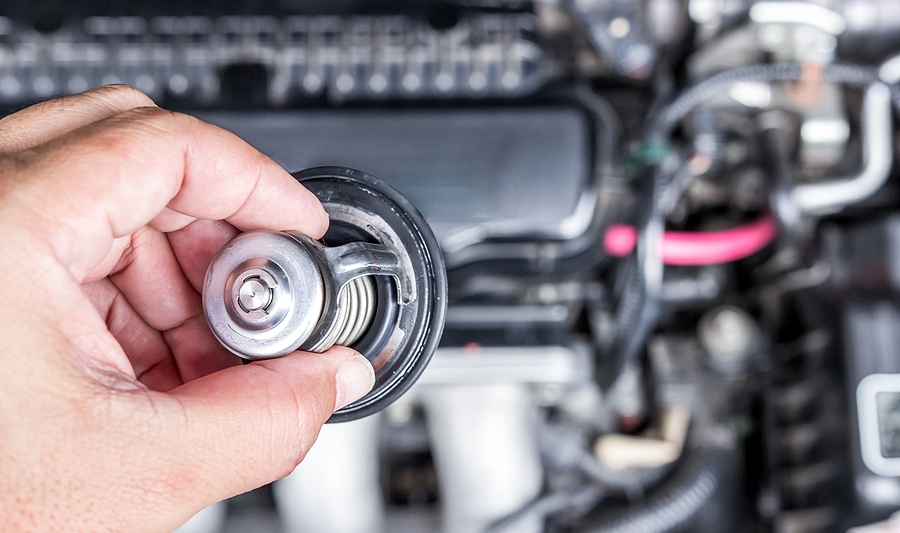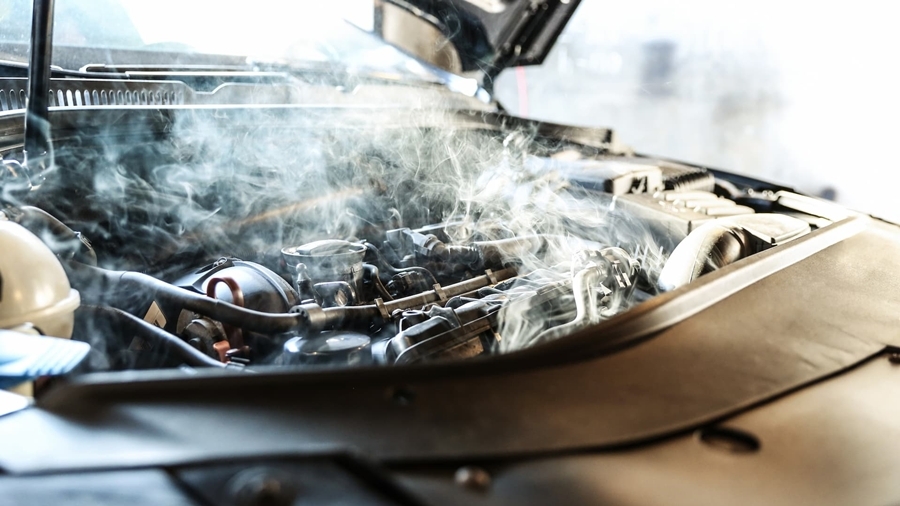Finding radiator fluid leaking from cap is never a pleasant surprise, especially when you’re already running late for work. Last month, my neighbor Sarah called me in a panic because her Honda was leaving green puddles in her driveway. After a quick look, we discovered the culprit was her radiator cap. If you’re dealing with this frustrating issue, you’re not alone – and more importantly, it’s usually fixable without breaking the bank.
This comprehensive guide will walk you through everything you need to know about diagnosing, fixing, and preventing coolant leaks from your radiator cap. Whether you’re a weekend mechanic or someone who just wants to understand what’s happening under the hood, we’ll cover all the bases.
Table of Contents
What Causes Radiator Fluid to Leak From the Cap
Understanding why radiator fluid leaking from cap happens is the first step toward fixing it. In my experience working on cars for over two decades, I’ve seen this problem more times than I can count, and it usually boils down to a few common culprits.
The radiator cap might look simple, but it’s actually a sophisticated pressure valve. Inside that cap is a rubber seal that creates an airtight barrier, allowing your cooling system to operate under pressure (typically 13-16 PSI). When this seal gets old and brittle, it can’t do its job anymore.
Also read: Coolant Leak Repair Price: 5 Important Factors
Here’s what typically goes wrong:
- Worn rubber seals – Heat and chemical exposure from coolant gradually break down the rubber gasket
- Excessive system pressure – When your engine runs too hot, pressure builds beyond what the cap can handle
- Corroded radiator neck – The metal surface where the cap sits can become warped or pitted over time
- Wrong cap specification – Using a cap with incorrect pressure rating for your vehicle
- Debris buildup – Dirt and grime can prevent the cap from sealing properly
I’ve seen caps fail after just two years in harsh climates, while others last five or more years with proper maintenance. The key is recognizing the warning signs early.

How to Identify Radiator Cap Leaks
Spotting radiator fluid leaking from cap early can save you from major headaches down the road. The signs are usually pretty obvious once you know what to look for.
The most telltale sign is finding colorful puddles under your car after it’s been parked overnight. Fresh coolant comes in various colors – green, orange, pink, or blue – depending on what type your vehicle uses. Don’t confuse it with water from your air conditioning, which is clear and odorless.
Other warning signs include:
- Sweet smell around the engine bay, especially when the car is warm
- White or colored crusty deposits around the radiator cap area
- Steam or vapor rising from the cap during operation
- Consistently low coolant levels despite no visible leaks elsewhere
- Higher than normal operating temperature on your gauge
I remember working on a customer’s truck where the owner kept adding coolant weekly but couldn’t figure out where it was going. A quick inspection revealed dried coolant residue all around the cap – a dead giveaway that radiator fluid leaking from cap was the problem.
Also read: Why Do Cars Overheat: 12 Shocking Reasons (And How to Fix Them)
Step-by-Step Diagnosis Process
Before you start diagnosing, let me stress this: never remove a radiator cap from a hot engine. I’ve seen too many people get burned by pressurized steam and scalding coolant. Always wait until the engine is completely cool.
Here’s my proven diagnostic approach:
Visual Inspection: Start by examining the cap itself. Look for obvious cracks in the plastic or metal, bent components, or a rubber seal that looks dried out and cracked. Sometimes the problem is immediately obvious.
Check the Radiator Neck: Clean the area where the cap sits on the radiator. Look for corrosion, warping, or any debris that might prevent a proper seal. I often find leaves, dirt, or even small insects that interfere with the cap’s ability to seal properly.
Pressure Testing: If you have access to a radiator cap pressure tester (many auto parts stores loan them out), test whether the cap holds pressure within its rated specification. Most caps should hold 13-16 PSI without leaking.
System-Wide Check: Don’t assume the cap is the only problem. Inspect all visible hoses, connections, and the radiator itself for other potential leak sources. Sometimes what appears to be radiator fluid leaking from cap is actually coming from a nearby hose or connection.
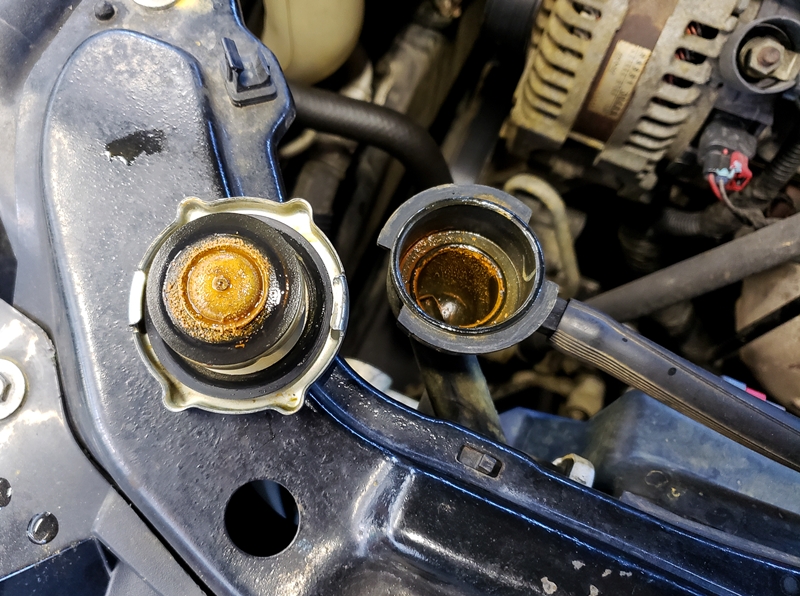
Emergency Temporary Fixes
Getting stranded with a leaking radiator cap is no fun, but there are some temporary fixes that can get you to safety. I always keep a few basic supplies in my truck for situations like this.
Immediate Steps: First, let the engine cool completely. Clean both the cap and radiator neck thoroughly with a damp cloth, removing any debris or corrosion. Sometimes a good cleaning is all you need for minor sealing issues.
Temporary Solutions:
- Electrical tape wrap – Carefully wrap the cap and neck connection (only as emergency measure)
- Radiator stop-leak – Pour into the system according to package directions
- Proper cap positioning – Ensure the cap is correctly aligned and fully tightened
Remember, these are strictly get-you-home fixes. I’ve seen people drive for months with electrical tape around their radiator cap, but that’s asking for trouble. The tape can melt, create a bigger mess, and mask underlying problems.
Keep extra coolant or distilled water in your vehicle for emergency top-offs. Monitor your temperature gauge like a hawk, and pull over immediately if it starts climbing into the red zone.
Professional Repair Solutions
When you’re dealing with persistent radiator fluid leaking from cap, it’s time to bring in the professionals. A good technician will do more than just slap on a new cap – they’ll diagnose the root cause and fix it properly.
Professional diagnosis typically includes pressure testing the entire cooling system. This reveals not just cap problems, but also weak hoses, internal leaks, or other issues that contribute to excessive pressure buildup.
What to Expect:
- Complete system pressure test to identify all leak sources
- Radiator cap replacement with OEM or high-quality aftermarket part
- Inspection and possible repair of radiator neck damage
- Cooling system flush and refill with proper coolant mixture
- Thermostat testing and replacement if necessary
I always recommend having the entire cooling system evaluated when dealing with cap leaks. Often, the cap failure is a symptom of other underlying problems like a failing thermostat or partially blocked radiator.
The investment in professional service usually pays for itself by preventing more expensive problems down the road. A $200 cooling system service beats a $3,000 engine replacement any day.
Preventive Maintenance Tips
The best way to avoid radiator fluid leaking from cap is through regular preventive maintenance. I tell all my customers that cooling system maintenance is like changing your oil – it’s cheap insurance against expensive problems.
Regular Maintenance Schedule:
- Replace radiator cap every 2-3 years regardless of appearance
- Check coolant level monthly when engine is cold
- Schedule cooling system flush every 30,000-50,000 miles
- Inspect all hoses and connections during routine service
Daily Habits: Pay attention to your temperature gauge during normal driving. Many people ignore this important instrument until it’s too late. If you notice the needle running higher than usual, investigate immediately.
Use only the coolant type specified in your owner’s manual. Mixing different coolant formulations can cause chemical reactions that damage seals and gaskets throughout the system.
Keep your cooling system clean by avoiding contaminated water sources when topping off. Tap water contains minerals that can cause corrosion and scaling inside your radiator and engine block.
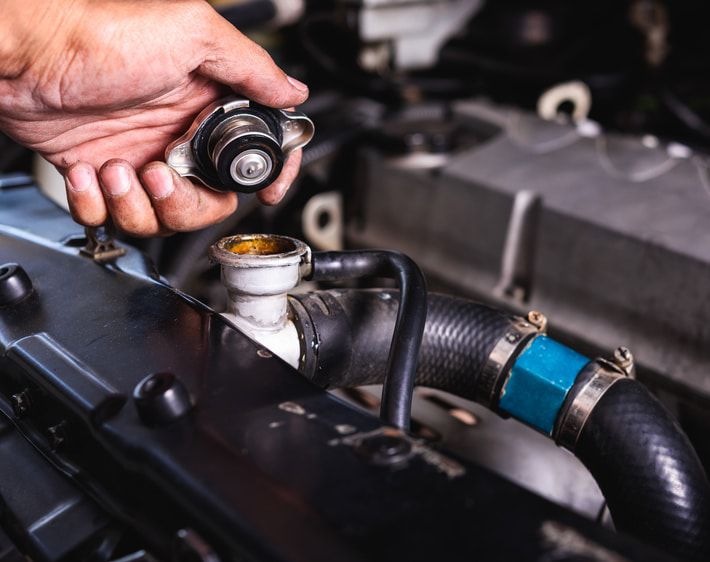
How These 10 Expert Tips Save You Thousands
Understanding the financial impact of preventive maintenance versus reactive repairs is eye-opening. I’ve seen customers spend $30 on prevention instead of $3,000 on engine replacement – that’s a 10,000% return on investment.
The Real Cost of Ignoring Radiator Fluid Leaking From Cap: When you ignore early warning signs, small problems snowball into catastrophic failures. A failed radiator cap allows your engine to overheat repeatedly, causing:
- Head gasket failure: $1,500-3,000 repair
- Cracked engine block: $3,000-5,000+ replacement
- Warped cylinder heads: $2,000-4,000 repair
- Complete engine replacement: $4,000-8,000+
How Prevention Saves Money: Let me break down the math. Regular radiator cap replacement every 2-3 years costs about $30. Monthly coolant level checks cost you nothing but five minutes. A cooling system flush every 40,000 miles runs $120-150.
Over 10 years, you’ll spend roughly $400 on preventive cooling system maintenance. Compare that to just one major engine repair averaging $2,500, and the savings become crystal clear.
Example: Last year, I worked with two customers who had identical vehicles. Customer A spent $200 annually on preventive maintenance and never had a cooling system failure in 150,000 miles. Customer B ignored maintenance and faced a $4,200 engine rebuild at 80,000 miles after radiator fluid leaking from cap led to severe overheating.
The proactive approach saved Customer A over $4,000 while providing reliable transportation. This pattern repeats itself constantly in the automotive world – prevention always costs less than repair.
Emergency Preparedness Savings: Keeping emergency coolant and basic tools saves towing costs ($100-200) and prevents turning minor leaks into major engine damage. A $20 emergency kit can prevent thousands in roadside breakdown expenses.
The bottom line: these 10 expert tips transform potentially devastating repair bills into manageable maintenance expenses. When radiator fluid leaking from cap occurs, quick action based on these principles can mean the difference between a $30 cap replacement and a $3,000 engine overhaul.
Prevention vs. Repair: 10-Year Cost Comparison
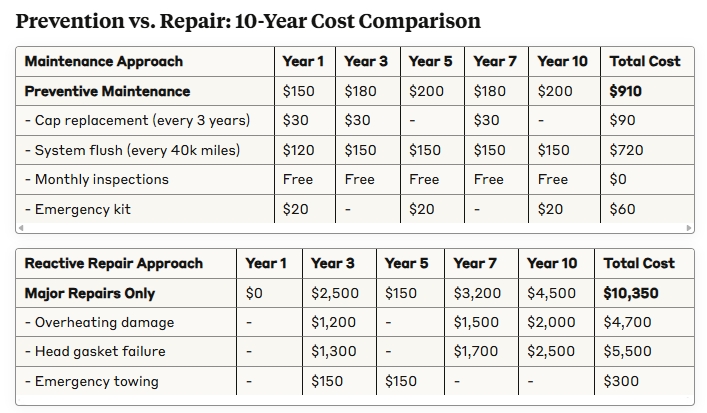
Potential Catastrophic Failures (Single Incident Costs)
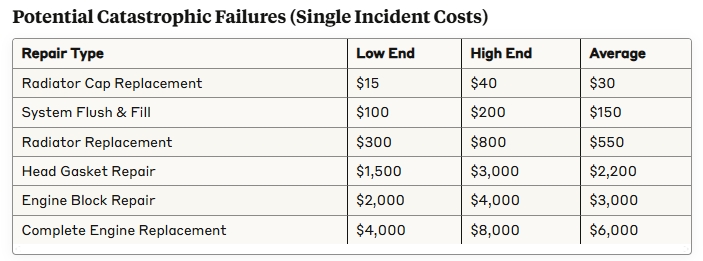
Savings Analysis
Preventive Maintenance Over 10 Years: $910
Reactive Repairs Over 10 Years: $10,350
Net Savings with Prevention: $9,440
Return on Investment: Every $1 spent on prevention saves $11.37 in repairs
This stark comparison shows why addressing radiator fluid leaking from cap proactively is one of the smartest automotive investments you can make. The numbers don’t lie – prevention isn’t just cheaper, it’s dramatically cheaper.
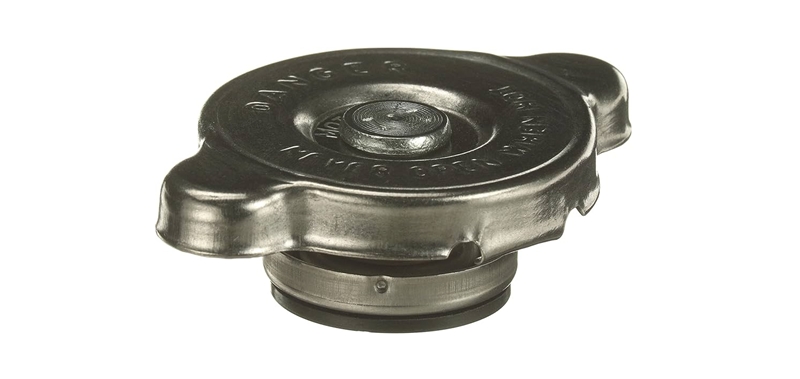
Where to Buy Radiator Caps: Genuine, OEM, and Aftermarket Options
When you’re dealing with radiator fluid leaking from cap, choosing the right replacement part is crucial for long-term reliability. Not all radiator caps are created equal, and understanding your options can save you both money and future headaches.
Understanding Your Cap Options
Genuine Parts (Original Equipment) These are caps made by the same manufacturer that supplied your vehicle’s original cap. When radiator fluid leaking from cap occurs on a newer vehicle still under warranty, genuine parts are often your best bet. They typically cost $25-60 but offer perfect fit and finish matching your vehicle’s specifications.
OEM Equivalent Parts OEM stands for Original Equipment Manufacturer, but in the aftermarket world, this term refers to parts that meet or exceed original specifications without necessarily being made by the original supplier. Quality OEM equivalent caps typically cost $15-35 and perform just as well as genuine parts for most applications.
Aftermarket Parts These range from budget options ($8-20) to premium aftermarket brands ($20-40). While some aftermarket caps work perfectly fine, others may not hold pressure correctly or fit properly, potentially causing recurring issues with radiator fluid leaking from cap.
Best Places to Purchase
Auto Parts Stores National chains like AutoZone, O’Reilly’s, and Advance Auto Parts stock radiator caps for most vehicles. They often provide free pressure testing and can help you verify the correct pressure rating. Most carry both budget and premium options, with knowledgeable staff who can guide your selection.
Dealership Parts Departments Your vehicle’s dealership is the go-to source for genuine parts. While more expensive, dealership caps come with warranty coverage and guaranteed compatibility. This is particularly important for newer vehicles or those with unique cooling system requirements.
Online Retailers Amazon, RockAuto, and PartsGeek offer extensive selections at competitive prices. When shopping online for radiator caps, always verify the pressure rating and thread type match your vehicle’s specifications. Read reviews carefully, as quality can vary significantly between brands.
Local Independent Parts Stores Don’t overlook smaller, independent parts stores. They often carry quality parts at reasonable prices and provide personalized service. Many have been serving their communities for decades and know which brands work best for local driving conditions.
What to Look for When Shopping
Pressure Rating This is critical – using the wrong pressure rating can cause radiator fluid leaking from cap even with a brand-new part. Check your owner’s manual or the old cap for the correct PSI specification, typically ranging from 13-16 PSI for most vehicles.
Thread Type and Size Radiator caps aren’t universal. The thread pitch, diameter, and neck depth must match your radiator exactly. Bring your old cap when shopping in person, or have your vehicle’s year, make, model, and engine size ready when ordering online.
Quality Indicators Look for caps with:
- Heavy-duty rubber seals that feel flexible, not hard or brittle
- Solid metal construction without sharp edges or rough finishes
- Clear pressure markings and manufacturer identification
- Warranty coverage from reputable brands
My Professional Recommendations
After years of experience with various brands, I recommend sticking with known manufacturers like Gates, Stant, or Motorad for aftermarket options. These companies specialize in cooling system components and consistently produce reliable products that prevent future radiator fluid leaking from cap issues.
For vehicles over 100,000 miles, a quality aftermarket cap often provides the best value. For newer vehicles or those with complex cooling systems (like some European imports), genuine or OEM equivalent parts are worth the extra investment.
Avoid ultra-cheap caps from unknown manufacturers. I’ve seen too many customers return within weeks with the same radiator fluid leaking from cap problem because they tried to save $10 on a substandard part.
Cost Considerations and When to Seek Help
Understanding repair costs helps you make smart decisions about your vehicle. In most cases, fixing radiator fluid leaking from cap is relatively inexpensive compared to other automotive repairs.
Typical Costs:
- Radiator cap replacement: $15-40 for the part, $25-50 labor
- System flush and fill: $100-150
- Radiator neck repair: $200-400
- Complete radiator replacement: $300-1,200 depending on vehicle
Don’t delay repairs hoping the problem will go away. I’ve seen minor cap leaks turn into major engine damage when ignored. The cost difference between a $30 cap and a $5,000 engine rebuild should motivate quick action.
Seek professional help immediately if you experience:
- Repeated overheating episodes
- Significant coolant loss (more than a cup per week)
- Steam coming from under the hood
- Coolant mixing with engine oil (milky oil color)

FAQ: Radiator Fluid Leaking From Cap
-
How often should I replace my radiator cap?
I recommend replacing radiator caps every 2-3 years, even if they appear to be working fine. The rubber seals deteriorate over time due to heat cycles and chemical exposure from the coolant.
-
Can I drive with radiator fluid leaking from cap?
Only for short distances to reach a repair facility. Monitor your temperature gauge constantly and stop immediately if it starts climbing. Keep extra coolant handy for emergency top-offs.
-
Why does radiator fluid leaking from cap happen more in winter?
Cold weather doesn’t directly cause cap leaks, but the extreme temperature changes between cold starts and operating temperature can accelerate seal deterioration. Also, people tend to notice leaks more easily on clean snow or garage floors.
-
Will radiator stop-leak products permanently fix my cap leak?
Stop-leak products are temporary emergency fixes at best. They might reduce minor seepage temporarily, but they can’t repair a failed cap seal or address underlying pressure problems. Some products can actually clog your cooling system if overused.
-
How do I know if my radiator cap has the correct pressure rating?
Check your owner’s manual or the original cap for the proper PSI rating. Using the wrong pressure cap can cause either insufficient cooling system pressure (leading to overheating) or excessive pressure (causing leaks and component damage).
-
Can a bad thermostat cause radiator fluid leaking from cap?
Absolutely. A stuck-closed thermostat causes excessive pressure buildup, which can force coolant past even a good radiator cap. This is why professional diagnosis looks at the entire cooling system, not just the cap itself.
Need a mechanic? Find one on the Mobile Mechanic Directory
Final Thoughts
Dealing with radiator fluid leaking from cap issues might seem daunting at first, but it’s one of those automotive problems that’s usually more bark than bite. Throughout my years working on vehicles, I’ve found that most cases of radiator fluid leaking from cap can be resolved quickly and affordably when addressed promptly.
The key takeaway here is simple: don’t ignore the warning signs. Whether you’re seeing puddles under your car, noticing that sweet coolant smell, or watching your temperature gauge climb higher than usual, these are all signals that your cooling system needs attention. Early intervention when you first notice radiator fluid leaking from cap can save you hundreds or even thousands of dollars in engine repairs.
Remember that your radiator cap is a small but crucial component in your vehicle’s cooling system. When radiator fluid leaking from cap occurs, it’s often telling you about larger systemic issues that need addressing. A professional diagnosis can reveal whether you’re dealing with a simple cap replacement or more complex problems like thermostat failure or radiator damage.
Most importantly, never attempt to remove a radiator cap from a hot engine, regardless of how urgent the radiator fluid leaking from cap situation appears. Safety should always come first, and cooling system repairs should be approached with patience and proper precautions.




